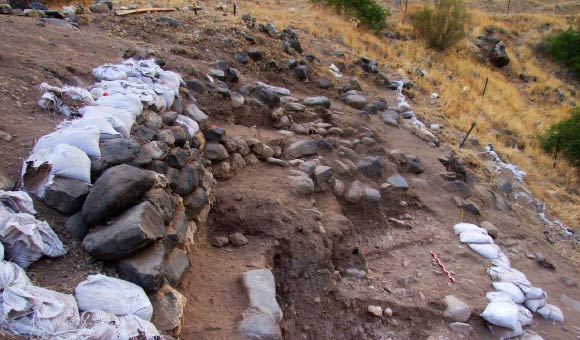Archaeologists were amazed by Peru’s ‘mind-blowing’ ancient solar calendar built into the desert
ARCHAEOLOGISTs were surprised by an old solar calendar found in the western desert plains of the nation for a long time.
Chankillo was one of the oldest observers of its kind in the world at the age of 2300 and the oldest in America. It is a building with 13 stone towers constructed on a hill and used as a calendar once. Chankillo was declared World Heritage Site only this summer. This Summer.
A two millennia before the rise of a well known and now renowned Inca sun worship, it was erected by an old Peruvian civilization.
It is thought that between 250 BC and 200 BC they finished it.
The ancient populations that utilised the chancellor have, according to current studies, collected exceptionally precise astronomical data, therefore also doubling its role as a temple and management block.
The constructions resembling the vertebras were termed the “Thirteen Towers,” which were utilised as artificial horizons by the ancient astronomers.
By defining the location of the Sun, the civilization could precisely anticipate future solstices and equinoxes and accurately estimate the date by one to two days.
“This information is supposed to help them plan the seasonal crop as well as organise religious ceremonies,” said BBC Science Focus magazine.
In his documentary, ‘Wonders of the Universe,’ Brian Cox visited Chakillo.
He strolled over the old timepiece in a clip from the episode entitled, “The Mind-blowing Ancient Solar Calendar” and remarked how the walls of the walled temple “were originally painted with a bright white, covered with painted figures.”
Mr Cox said that in his contemporary day scholars are ignorant about who made up this old society, “the smallest pieces of ornamentation have gone”
Researchers have been similarly confused about the purpose of Chankillo for decades.
It was only in 2007 that research in the journal Science indicated that the “summer and winter solstices” tower sequence and Chankillo “was partly a solar observatory.”
Ivan Ghezzi, Peruvian archaeologist, who co‐authored the paper with Clive Ruggles, told AFP that the towers were constructed “with high accuracy” and set to indicate various places in Sun’s position and, as such, identify the precise dates.
The building functions effectively as a big clock that marks the time span throughout the course of a year.
Between the fifth and sixth towers in September, the Sun would rise.
It shrinks between the final tower on the morning before the 21st of December.
He remarked to Mr Ghezzi: “Chankillo is an old Peruvian classic.
“An architectural marvel, a technical and astronomical masterpiece.
“This is America’s crib of astronomy.”
And since it is also probably a centre of worship of the Sun, there are traces of artefacts that were used to ritual sacrifice on the locations east and west of towers.
It was surrounded by fortifications walls of stone, mouth and trees that cover 5,000 acres of magnificent sites, and yet only one per cent is said to have been investigated. The observatory and its ceremonial appendices were protections.
When the coronavirus epidemic hit Peru, excavations were stopped at antique sites and black market dealers raided several times.
While Chankillo remained undisturbed, farmers surrounding the site extended their pastures.
The UNESCO status is believed to be able to help safeguard it from future threats and to assist sustain the farmers in difficulty.




